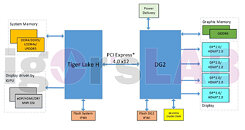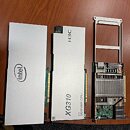
Intel's Desktop and Mobile "Arrow Lake" Chips Feature Different Versions of Xe-LPG
Toward the end of 2024, Intel will update its client processor product stack with the introduction of the new "Arrow Lake" microarchitecture targeting both the desktop and mobile segments. On the desktop side of things, this will herald the new Socket LGA1851 with more SoC connectivity being shifted to the processor; and on the mobile side of things, there will be a much-needed increase in CPU core counts form the current 6P+8E+2LP. This low maximum core-count for "Meteor Lake" is the reason why Intel couldn't debut it on the desktop platform, and couldn't use it to power enthusiast HX-segment mobile processors, either—it had to tap into "Raptor Lake Refresh," and use the older 14th Gen Core nomenclature one last time.
All hopes are now pinned on "Arrow Lake," which could make up Intel's second Core Ultra mobile lineup; its first desktop Core Ultra, and possibly push "Meteor Lake" to the non-Ultra tier. "Arrow Lake" carries forward the Xe-LPG graphics architecture for the iGPU that Intel debuted with "Meteor Lake," but there's a key difference between the desktop- and mobile "Arrow Lake" chips concerning this iGPU, and it has not just to do with the Xe core counts. It turns out, that while the desktop "Arrow Lake-S" processor comes with an iGPU based on the Xe-LPG graphics architecture; the mobile "Arrow Lake" chips spanning the U-, P-, and H-segments will use a newer version of this architecture, called the Xe-LPG+.
All hopes are now pinned on "Arrow Lake," which could make up Intel's second Core Ultra mobile lineup; its first desktop Core Ultra, and possibly push "Meteor Lake" to the non-Ultra tier. "Arrow Lake" carries forward the Xe-LPG graphics architecture for the iGPU that Intel debuted with "Meteor Lake," but there's a key difference between the desktop- and mobile "Arrow Lake" chips concerning this iGPU, and it has not just to do with the Xe core counts. It turns out, that while the desktop "Arrow Lake-S" processor comes with an iGPU based on the Xe-LPG graphics architecture; the mobile "Arrow Lake" chips spanning the U-, P-, and H-segments will use a newer version of this architecture, called the Xe-LPG+.








































